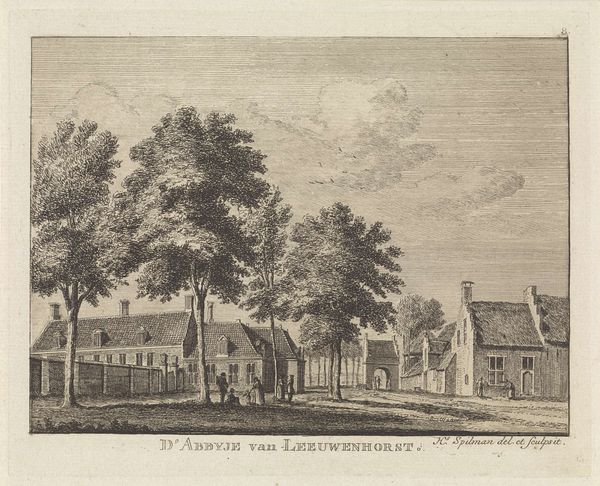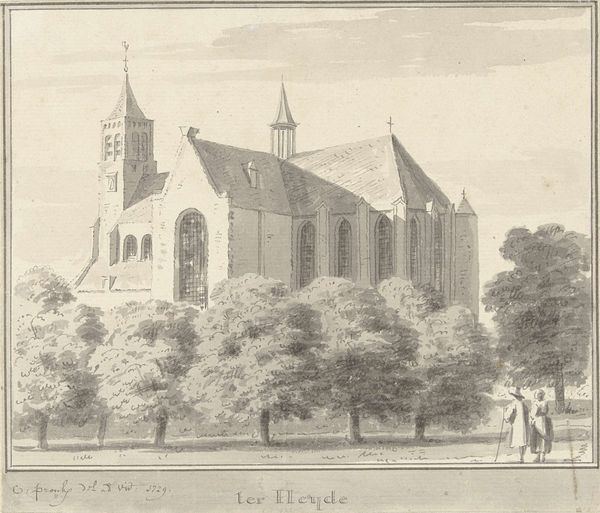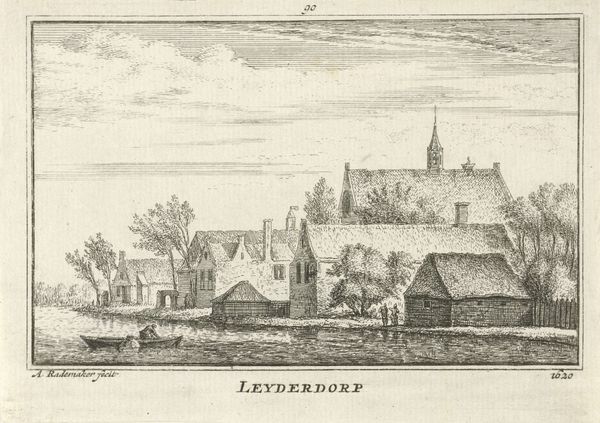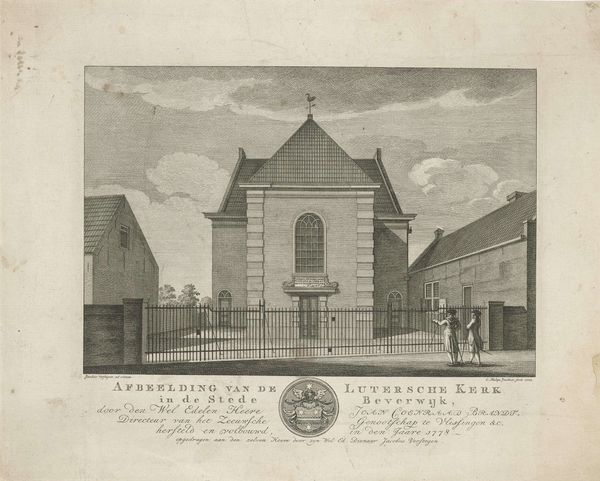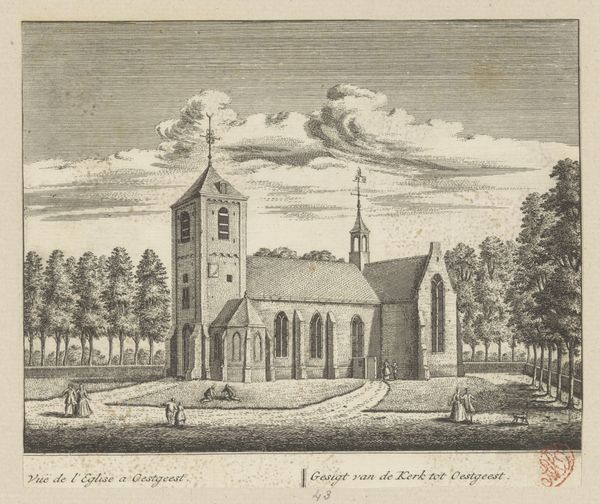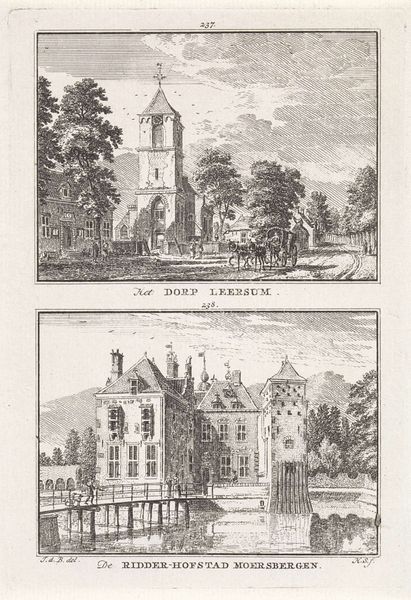
print, engraving
#
baroque
#
dutch-golden-age
# print
#
landscape
#
engraving
Dimensions: height 85 mm, width 110 mm
Copyright: Rijks Museum: Open Domain
Editor: So, here we have "View of a Chapel" by Hendrik Spilman, created as an engraving in 1757. I find the scene quite peaceful, almost idyllic. The simple structure of the chapel, the figures relaxing nearby – it’s all very charming. What catches your eye? Curator: What resonates for me are the symbolic weights the chapel carries. In the context of the Dutch Golden Age, landscapes weren't just about pretty scenery; they were often loaded with cultural meaning, even moral messages. Consider the presence of water, which recurs through Dutch painting. What associations does water hold here, separating us from and linking us to the chapel? Editor: Hmm, I hadn’t really thought about it like that. I suppose the water does create a sense of distance, a contemplative space between the viewer and the sacred site. It feels quite deliberate now that you mention it. Curator: Exactly. And how do you interpret the figures lounging in the foreground? Are they worshippers, or are they simply passersby? Their relation to the chapel itself tells us something about society’s changing relationship to religion and the role of sacred places in everyday life. Editor: That's a great point. They do seem pretty relaxed to be near a chapel, almost as if it is now part of the secular landscape. So, even a seemingly simple landscape can be dense with symbolism. Curator: Precisely! It reminds us that images speak volumes if we learn how to listen, picking up the echoes of shared cultural memory and beliefs embedded within. Editor: I’ll definitely look at landscapes differently from now on. Thanks for illuminating that. Curator: My pleasure! It's a wonderful piece to think about the continuous unfolding of cultural values over time.
Comments
No comments
Be the first to comment and join the conversation on the ultimate creative platform.



